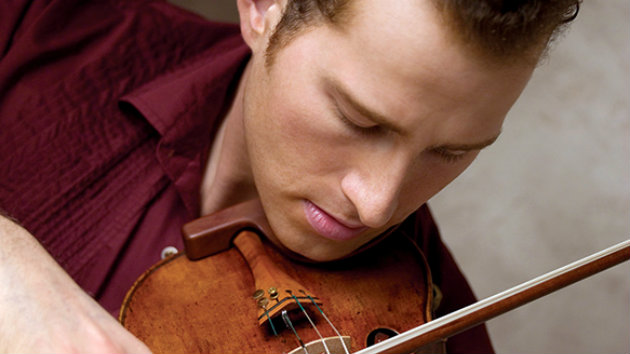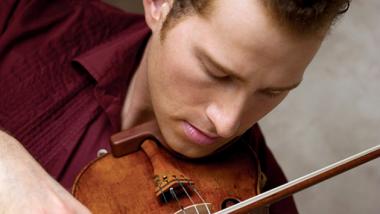
As a champion of new music as well as repertoire from his native France, visiting guest conductor Stéphane Denève performed double duty on Feb. 20 when he premiered French composer Guillaume Connesson’s 2005 piece A Glimmer in the Age of Darkness during the San Francisco Symphony’s latest series of subscription concerts.
Denève has a long-standing relationship with Connesson (b. 1970) that dates back to before the conductor’s days as music director of the Royal Scottish National Orchestra (2005 - 2012), where he commissioned several pieces from his compatriot.
A Glimmer in the Age of Darkness, dedicated to Denève, is the second part of Connesson’s “Cosmic Trilogy” and fits between Supernova (1997), about the death and explosion of a star, and Aleph (2007), which is about the Big Bang.
Originally titled Une Lueur dans l’âge sombre, the piece is inspired by a scientific article about the formation of galaxies, about 400,000 years after the Big Bang, when the first light developed in the universe.
The analytical and somewhat detached description that Connesson gives of his own piece in the program notes would suggest a rather abstract, artificial, and mechanical composition full of stock sound effects, but nothing could be farther from the truth. Whatever aural images the phrase “light emerging from darkness” conjures up, Connesson incorporates them all — and then some.
The analytical and somewhat detached description that Connesson gives of his own piece in the program notes would suggest a rather abstract, artificial, and mechanical composition full of stock sound effects, but nothing could be farther from the truth.
His earlier pieces can sound like a selection of quotes or references from his self-confessed influences such as Ravel, Messiaen, Debussy, Stravinsky, and others. But Glimmer is a highly original, albeit unmistakably French piece that is pure, unadulterated atmosphere. Familiar and warm without being banal; coherent and harmonious, compelling and gratifying, the piece is like an enormous soundgasm, delivered to the symphony by Denève’s meticulous conducting.
Denève has described his approach to conducting as painting with sound. He is a master at applying a French palette of orchestral colors, and the infinitely flexible and responsive S.F. Symphony is eager to provide all the tonal hues that he asks for. At the same time, and no matter how French the orchestra sounds, one does not get the impression that the musicians are straining or even close to the limits of their “Frenchness.” Denève will certainly strengthen and deepen the symphony’s Gallic conscience during future visits, and bring the S.F. Symphony to new heights.
The only casualty of the French love affair between Denève and the S.F. Symphony was Russian composer Sergei Prokofiev and the colorful orchestral suite that the conductor pieced together from the 50 dance movements of the three-act ballet Cinderella.
In itself an excellent companion piece for Connesson’s Glimmer (both were played after intermission), this 14-movement suite lingered too long in Romantic smoothness, and it was not until the end of the suite that Denève introduced a much-needed hint of the grotesque to remind the audience that this was not a Tchaikovsky score.
The concert started , unusually, with the evening’s solo performer, Danish-Israeli violinist Nikolaj Znaider, in the Violin Concerto, Opus 33 by Danish composer Carl Nielsen (1865-1931).
Nielsen’s concerto consists of two loosely structured movements with distinctly different characters. In an almost exclusively supporting role, the orchestra creates vast views of open Nordic skies, which offset the brilliant details and sometimes slightly manic episodes in the solo violin.
Znaider made complete sense of Nielsen’s free-flowing solo part and exposed the internal logic of the concerto’s fluid and rhythmically unpredictable melodies, but he was particularly eloquent in its two virtuoso cadenzas.
Alone with just his Guarneri del Gesu, Znaider was at the top of his game, as he also demonstrated in his hypnotic encore, the Sarabande from Bach’s Partita for Violin Solo No. 2 in D minor, BWV 1004.

